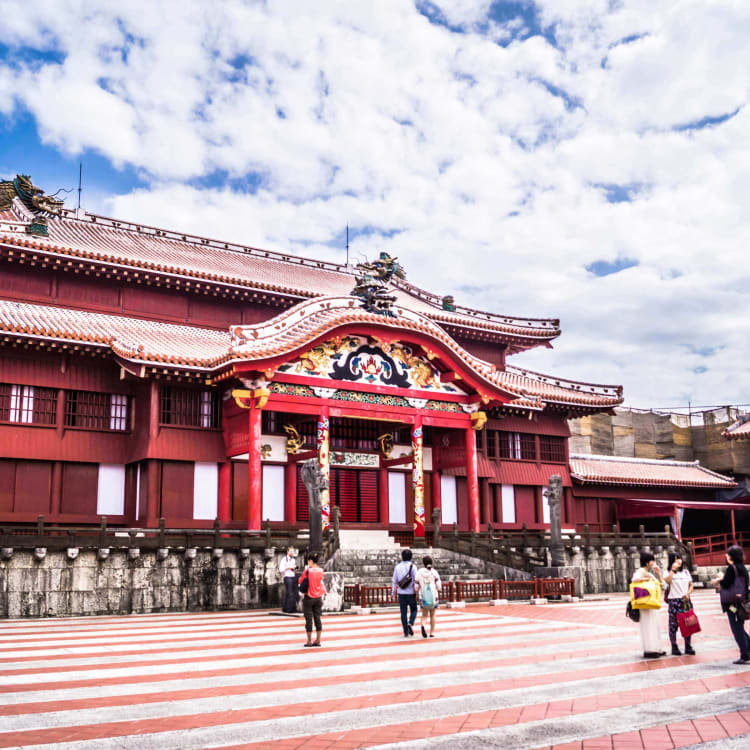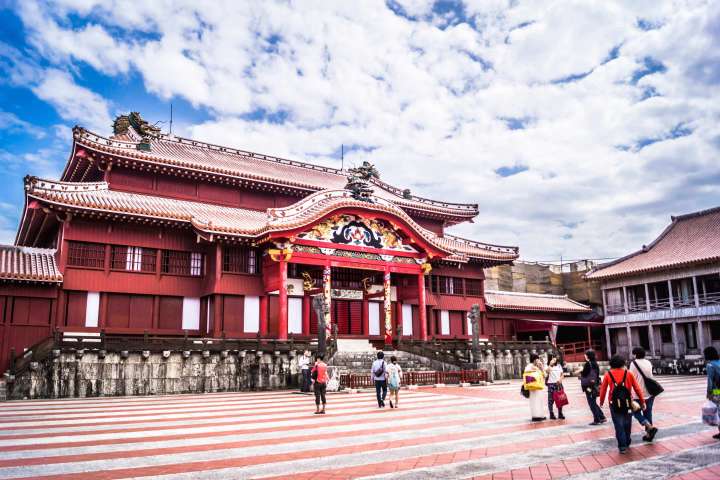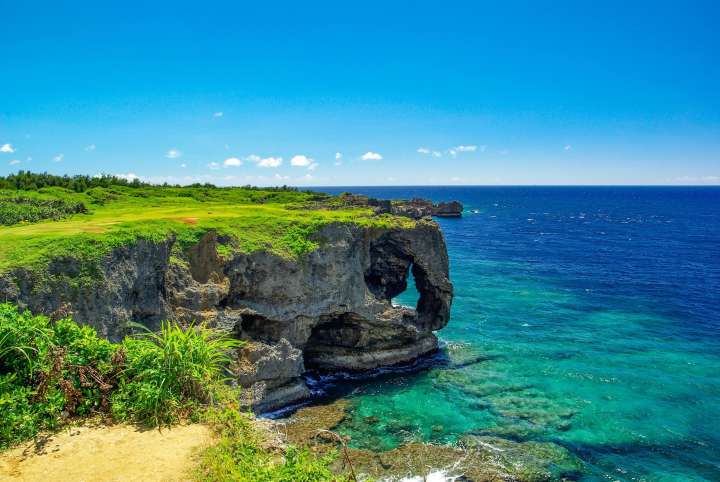
Story Okinawa: Sightseeing by JNTO on 04 January 2018
The main island of Okinawa is home to a number of attractions, ranging from historic sites to shopping streets, scenic sites, and night spots.
Castles
The main drawcard in Okinawa for visitors – both Japanese and foreign alike – is Shuri Castle. Shuri was the former capital of the Ryukyu kingdom from the 15th to 19th centuries when Okinawa was an independent nation, and the castle was its stronghold.
Shuri’s biggest attraction is the main hall of Seiden, the imposing vermilion-colored landmark of Okinawa. The former venue for major state affairs, its architecture differs significantly from other Japanese castles. At certain times of the year, the castle hosts reenactments of royal processions and other important historic moments. Shureimon – the castle’s second gate – adorns the ¥2,000 note issued in 2000 to commemorate the G8 summit held in Okinawa.
At one point, Ryukyu had more than 220 castles, with Shuri being the only one fully-restored today. Other castle ruins can still be seen in various parts of the island, including Katsuren which was built on a peninsula surrounded by the Nakijin Castle which features sacred groves and cherry blossoms.

Capes
If you’re on a road trip, you should check out Okinawa’s famous capes: Manza, Maeda, Hedo, and Zanpa. Each has its own unique attraction – Manza is famous for its elephant-shaped cliff, Maeda is known for its rock formations (and the access point to the famous Blue Cave dive site), Hedo is located on the northernmost tip of the island, and Zanpa is known for its lighthouse. All of these are great for watching sunsets.

Kokusai-dori
Okinawa’s most famous shopping street is Kokusai-dori, which is packed with souvenir stores and restaurants that stretch for about 2km through downtown Naha. It’s a great place for souvenir shopping, where you can get local awamori liquor, and the ubiquitous kokutou (brown sugar), and shisa; often seen perched atop homes, walls, and temples across Okinawa, shisa figures were first brought over from China in the 14th century when Okinawa was the Ryukyu kingdom. These ubiquitous guardian lion-dog statues always come in pairs – one has an open mouth to ward off evil spirits while the other has an closed mouth to keep good spirits in. There is also a variation where a shisa has a sphere under one paw to symbolize a concentration of wealth and bountiful crops.

If you prefer making your own souvenir, you can try your hand at traditional crafts like pottery and glass-blowing at the Naha Traditional Craft Centre. Colorful Ryukyu glass is one of Okinawa’s most famous crafts, originally made from glass bottles disposed by the US military after the war.
Hungry? Head to Yatai-Mura, where over 20 outdoor food stalls serve mostly Japanese fare made with Okinawan ingredients, just off Kokusai-dori. Nearby is the Makishi Public Market where locals come to get fresh produce – there are also restaurants that serve food made with these ingredients.
After dark
A great way to experience Okinawa nightlife is to visit izakaya (pubs) or even live houses where you can listen to live traditional shima uta (or ‘island song’) performed with the sanshin (a traditional stringed instrument).
A number of nightlife districts can be found in Naha, including the former red-light district of Tsuji, the main nightlife hub of Matsuyama, as well as Ichigin Street (Kumoji), which is lined with traditional establishments where awamori liquor is plentiful.


























































